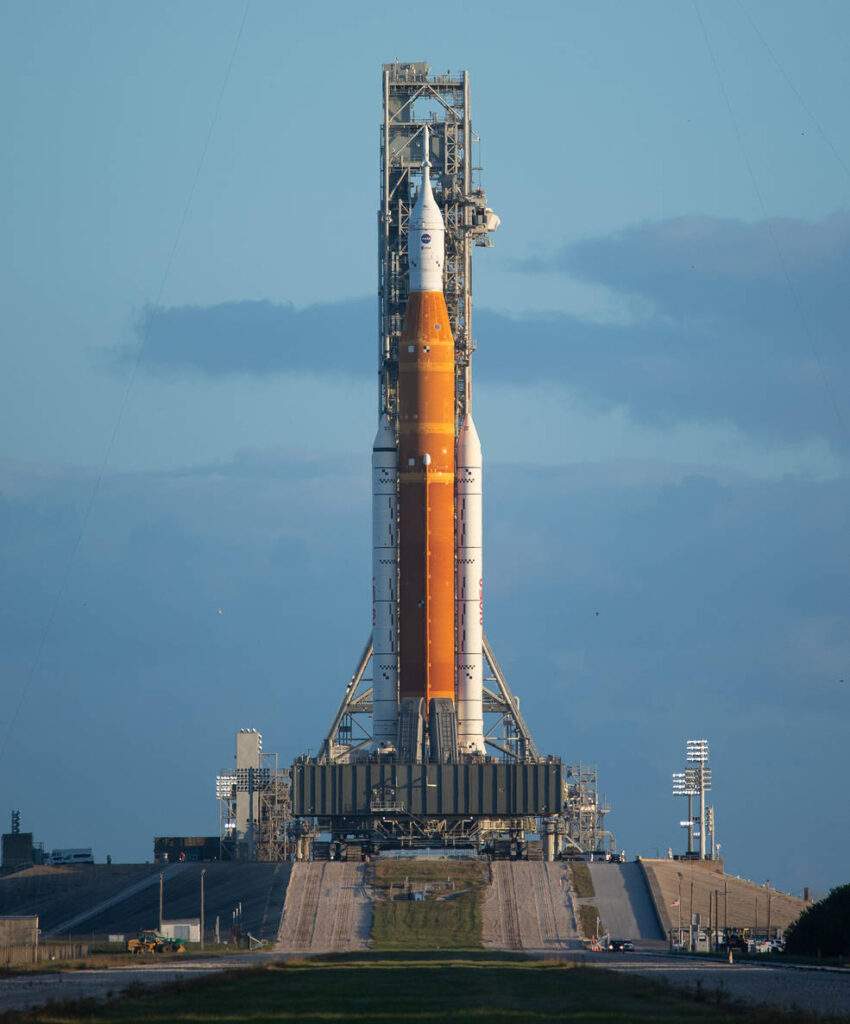
The first rocket of NASA’s Artemis space program was launched on November 16, after many weeks of
delays.
The rocket—which was made up of the Space Launch System (SLS) and an Orion space
capsule—was launched at 1:47 a.m. Eastern time from the Kennedy Space Center in Cape
Canaveral, Florida.
The mission, called Artemis 1, is the first step in a plan to put humans on the moon again.
What NASA learns from this mission will help it to prepare for future human expeditions to the moon
and eventually Mars.
Two earlier attempts to launch the rocket, on August 29 and September 3, had to be cancelled because of
technical problems. Then bad weather from Hurricane Ian and Hurricane Nicole also delayed the
launch.
Soon after liftoff, the Orion capsule separated from the SLS and began its 386,000-kilometre
journey to the moon. Orion is expected to pass within 100 kilometres of the moon’s surface on
Nov. 21. Then it will travel beyond the moon and begin to orbit it from a distance of about
70,000 km.
After a couple of weeks, it will return to Earth. Orion is expected to splash down in the Pacific Ocean, off the coast of California, in early December.
The Orion capsule is where the crew will sit on future missions. There is no crew present on this
flight, but there are three test dummies, which NASA calls “moonikins.” The moonikins will test
a new flight suit and radiation protection vest.
Orion is also carrying a cargo of ten CubeSats. CubeSats are small satellites—about the size of a
shoebox—which each carry a different scientific experiment. For example, one CubeSat will
search for water on the surface of the Moon. Another will measure the effect of deep-space
radiation on yeast. A third will create an image of Earth’s plasmasphere (a layer of the
atmosphere around Earth). Orion will release the CubeSats during its flight so they can conduct
their experiments independently.
The next Artemis mission is planned for some time in 2024. It will carry four astronauts into
space, but they will not land on the moon. The first Artemis moon landing won’t happen until
2025 at the earliest.
The last time humans landed on the moon was 50 years ago. In 1972, the crew of the Apollo 17
mission made three moonwalks and brought back 110 kilograms of samples which are still being
studied by scientists.
The first human to set foot on the moon was Neil Armstrong, in July 1969, on the Apollo 11
mission. Altogether, there have been six missions where astronauts landed on the moon.
The Artemis program is a partnership between NASA and three other agencies: the European
Space Agency (ESA), Japan Aerospace Exploration Agency (JAXA), and the Canadian Space
Agency (CSA). Private spaceflight companies are also involved in the program.
THINK & DISCUSS
- NASA’s mission is called Artemis. Why?
- What does NASA hope to learn from the Artemis mission? What in the article gave you that information?
- The article mentions Neil Armstrong. Who was he? Who else has done what he did?
- Do you think space exploration is important? Why or why not?
LINKS TO DIVE DEEPER INTO THIS TOPIC
NASA recap of Artemis launch: https://www.youtube.com/watch?v=mYTvg2abusc
What is a CubeSat? https://www.asc-csa.gc.ca/eng/satellites/cubesat/what-is-a-cubesat.asp
Canada’s role in moon exploration: https://www.asc-csa.gc.ca/eng/astronomy/moon-exploration/







